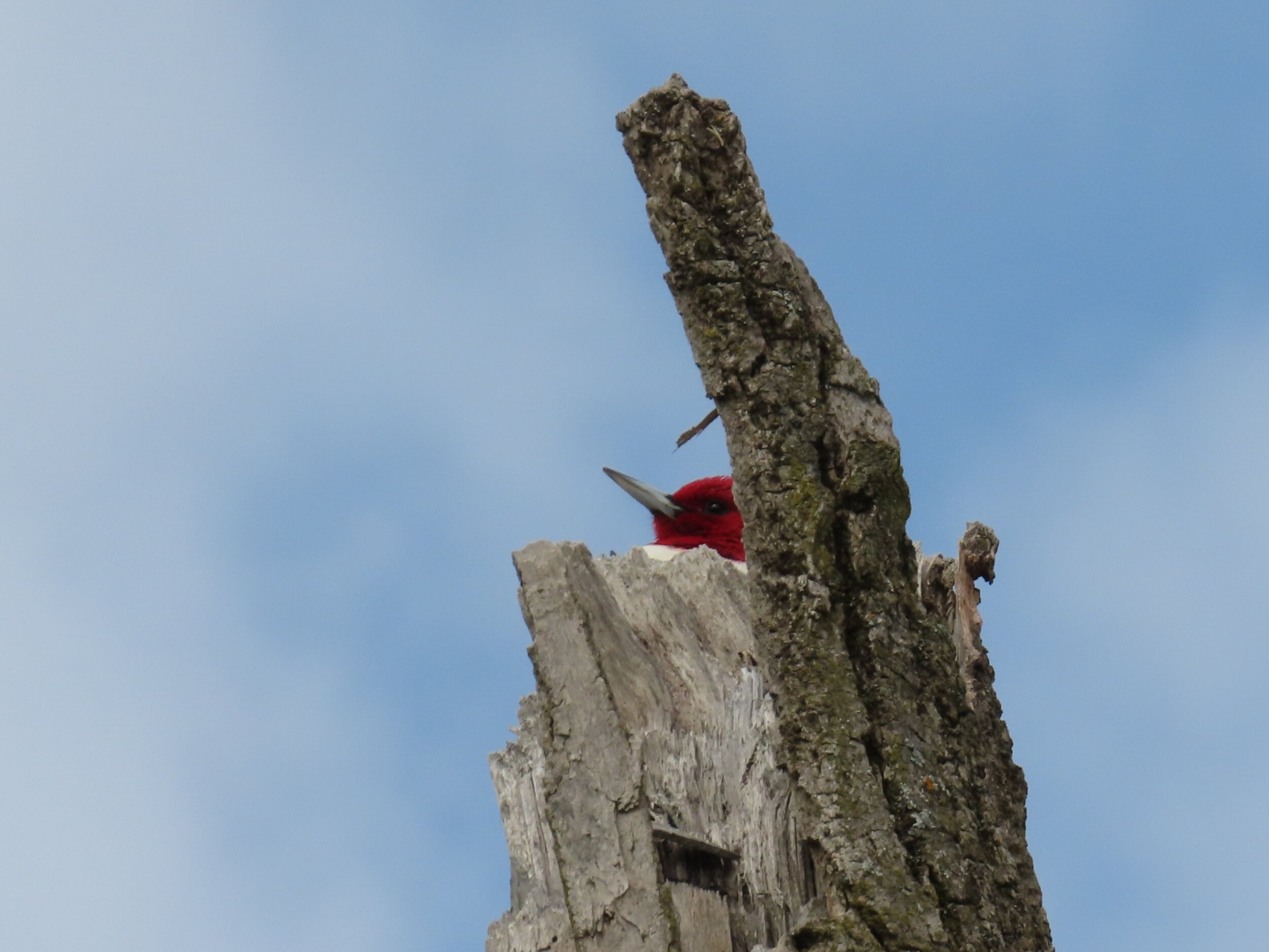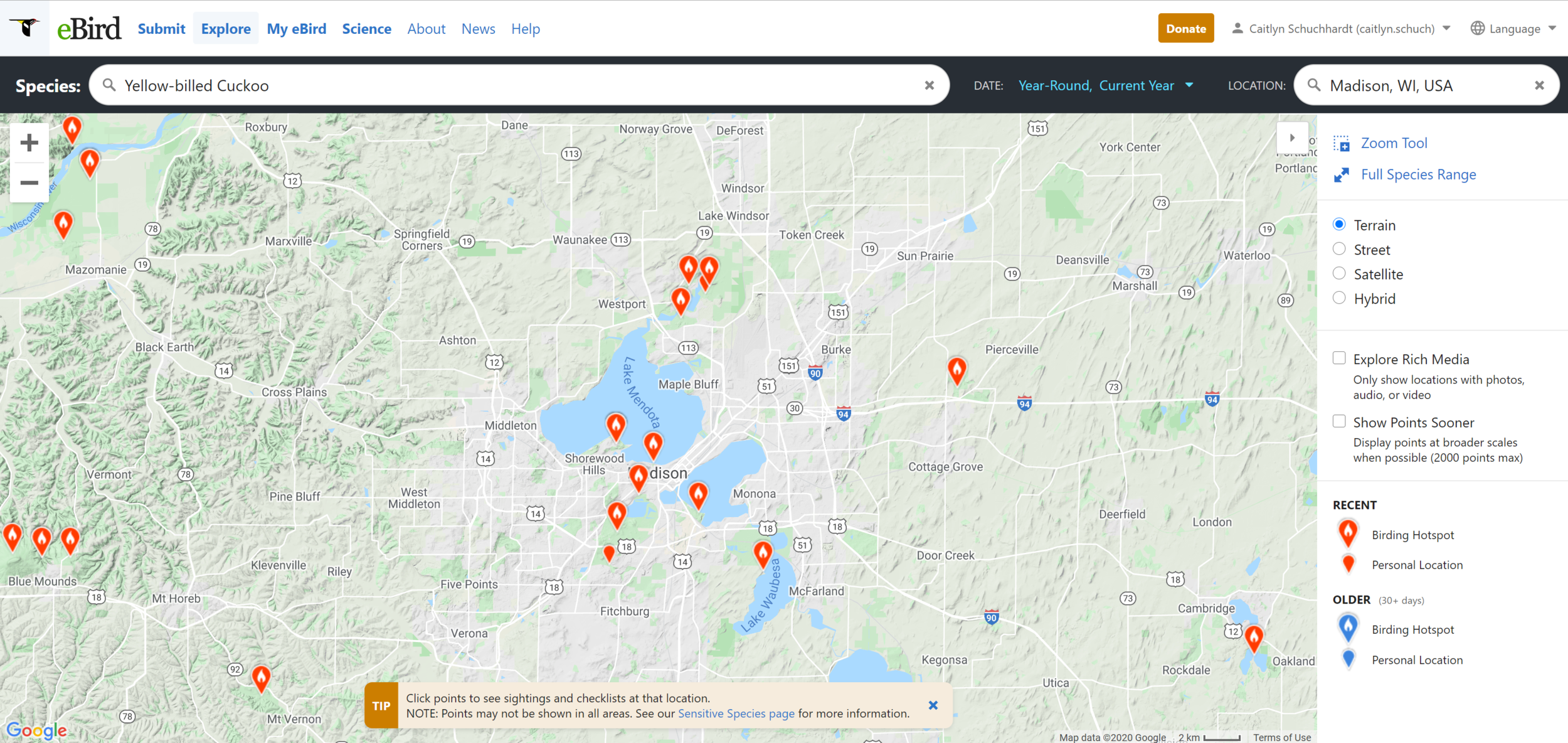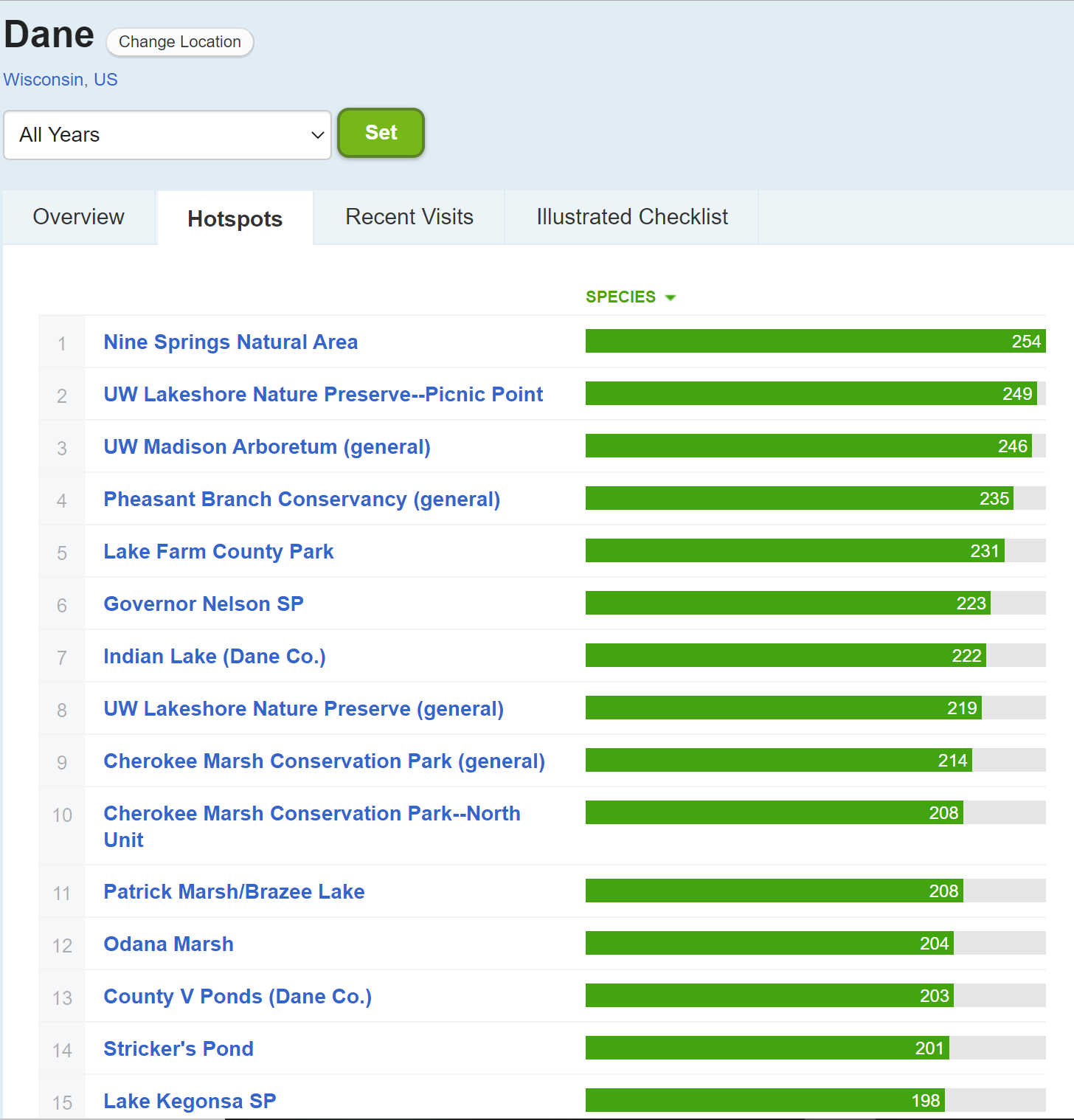Okay, okay. I’m sure you already know how to find birds. As a new birder, you’re likely noticing birds all over the place—from your backyard to the park to the grocery store parking lot.
This week’s Entryway to Birding post is for those of you who are feeling pretty comfortable with your backyard bird IDs and are itching to see a new species! Maybe you’re eager to test out your ID skills, or maybe you want to venture to a new destination in search of a little more variety than the backyard can hold.
Where do you start looking? How do you know where to go? What might you expect to find at this time of year?
On one hand, the answer to these questions is as simple as getting outside and seeing what you find! On the other, it gets a little more complicated as issues of habitat, range, and migration patterns come into play. Getting a sense of what you might see, where you might see it, and when you might see it can feel like a big challenge to a new birder who is still learning the ropes.
Luckily, there’s an incredible resource available to help a birder out! This week, we’re going to dip our toes into the wonderful world of eBird. We’ll learn how to explore bird species in our area and how to find “hotspots” where we’re likely to find a variety of bird species.
Knowing where to find birds is one thing. Actually spotting them is another! I’m not sure I would have noticed the red-headed woodpecker hiding in this tree if I hadn’t known it might be nesting nearby. Photo by Caitlyn Schuchhardt
What is eBird?
eBird is a citizen science project developed by the Cornell Lab of Ornithology. Birders across the world can contribute their sightings to eBird by posting checklists of species they see while birding. Those sightings can contribute to bird research worldwide and can help shape important decisions about environmental conservation. Imagine the resources it would take to monitor bird density and population over the globe—it’s a huge challenge! eBird allows everyday folks—even new birders like you and me!—to contribute data that can make a difference.
eBird’s massive database of bird sightings isn’t just available to researchers—it’s available to you too! We can use tools on eBird to easily look up species we may be interested in seeing or explore locations where we may find some new birds, all based on what other birders have been reporting.
eBird has a host of features that are useful to birders—new and experienced. There’s a lot to unpack in just one blog post, though. Today we’ll focus on how we can use eBird to find more birds. In the upcoming weeks, we’ll explore more features of this citizen science project and learn how it can be a game-changer for you as a birder.
Note: to take full advantage of the features below, like the range map, you’ll need to make an eBird account, which is completely free. If you’re not ready to make an account yet, you can still take advantage of some of the features I mention below, just not all of them.
Explore Species
Is there a bird species you’ve been eager to see in person? Maybe a neat bird that Madison Audubon staff have written about in the Friday Feathered Feature? Perhaps something you’ve been eyeing in your field guide, or something you've seen on the Birding Wisconsin Facebook Group? If you’ve got a “target species” you’d like to find, then the Explore Species feature on eBird is for you.
The Explore Species section on eBird can help you discover what birds are in your area, but also all across the world! Check it out and see what you might find. Image from ebird.org
Earlier this month, I was on the prowl for a yellow-billed cuckoo—a bird that I had never seen before and only recently learned existed! I knew it was a bird unlikely to show up in my apartment complex (I wish!) and I doubted that I’d find one at my neighborhood park. To get a better idea of where I might see one, I turned to eBird’s Explore Species page.
Entering “yellow-billed cuckoo” into the search bar takes me straight to a field guide page with information from Merlin ID (yep—that field guide we used when we practiced bird identification! It’s also made by Cornell Labs). There’s a brief description of the bird, some photographs, and the option to listen to its calls—which I highly recommended! They are such a unique sounding bird! The bulk of the info on this page, though, is about the number of sightings.
Scroll down to the range map and click “Large Map.” This will take you to an interactive Species Map where you can enter a date range and a location. I entered “Year-Round, Current Year” and “Madison, WI” to see all the posted sightings of yellow-billed cuckoos in 2020. You can tweak these settings a lot, so play around and see how you can broaden and narrow your search results.
This map helped me narrow down the locations where I was likely to find a yellow-billed cuckoo. Image from ebird.org
Above is the map that resulted from my search. All those red pins with little fire symbols? Those are designated birding hotspots where yellow-billed cuckoos have been seen. Regular red pins are personal locations (or basically any location that isn’t at a birding hotspot). Clicking on each pin will reveal a list of who has seen the bird recently, plus comments or pictures they have added to their sightings. Red pins denote recent sightings, while blue pins are less recent. (We don’t see any blue on this map because I set the date range to only 2020, so we’re only seeing this spring’s first arrivals of yellow-billed cuckoos.)
Will going to one of these locations guarantee that you’ll find a yellow-billed cuckoo?
Nope! There are no guarantees in birding.
Will heading to a spot where you know that several other folks have recently seen a yellow-billed cuckoo slightly increase your chances of finding one?
Now that’s a yes!
Here’s a photo of the first yellow-billed cuckoo that I saw just this last week at Hog Island! I was incredibly lucky and got to witness two yellow-billed cuckoos mating. It was quite the experience for a lifer! See if you can find my eBird by checklist on the range map by following the steps above—you’ll be treated to some more photos of the sighting! (Yes, those kind of photos!) Photo by Caitlyn Schuchhardt
Explore Regions
One of the biggest perks of birding is that it will take you to new destinations. You’ll find yourself visiting conservation parks you never knew existed. You’ll learn about WPAs (waterfowl production areas) and SNAs (state natural areas) and get familiar with some “side of the road” locations where muddy flats will attract shorebirds. You might stumble across some of these destinations on your own—it’s always such a joy to discover a hidden gem!—but some of them may be off the beaten path where you may not think to go.
There are a ton of neat features in the Explore Regions section. Enter your county and see what you might learn! Image from ebird.org
The “Explore Regions” feature on eBird can help you discover birding destinations are in your county. You can get a list of the 100 top “hotspots” or places that are frequently birded and may have high species counts (i.e. lots of different bird species have been spotted there), or you can browse a map to find places near you. Let’s take a look!
Enter a county name into the search bar. (A city name won’t work—you’ll have to know the county of the area you’d like to search. If you didn’t know your Wisconsin counties before you started birding, you’ll know them soon!) I entered Dane and it took me to a screen of recent sightings. You can browse the list of birds that folks have seen in the previous day, view recent checklists along the side bar, click on a map to see locations, or check out the other tabs near the top of the page. Clicking on “Hotspots” will bring you to a list of the top 100 birding hotspots in Dane County, which you can sort by “all time” or by “year” to see how many species have been spotted in each location.
This is just a small selection—there are hotspots galore all across Wisconsin! Image from ebird.org
You’ll likely recognize a lot of these places if you live in the area, but as you scroll down the list, you may see more than a few locations you don’t recognize. This is a great list to browse if you’re looking for a new birding destination. These places tend to be frequently birded and you can get an idea of what species you might expect to find by clicking on the location and browsing the list of recent checklists.
Seeing what other birders are reporting can be really helpful to a new birder as you start to pick up on what birds are common in your area during each season—even if you may not be able to ID them on your own yet, it’s still cool to know they’re there!
If you’d rather view a map of locations to see what’s near you, click the map in the top right corner. You’ll see this interactive map, pictured below:
Oh, the places you’ll bird! Look at the hotspots all over town! Image from ebird.org
Look at all those places you might bird! There are so many gems to explore on this map. I have only been to a fraction of the places on this map, and I love having access to this list as a backup when I’m feeling unsure about where I want to go.
All that said, don’t be limited by the map! Use the Explore Regions tool on eBird as a resource to discover potential new places to bird and learn about what species fellow birders are finding in your region—but take the hotspot list with a grain of salt at the same time. This feature shows you where other birders are frequently submitting checklists and isn’t a sign of how “birdy” or not a particular location may be on the day you visit. For all you know, there’s a bunch of really cool birds hiding out in an under-birded park in your neighborhood. You won’t know until you look!
Bonus Fun Feature: The Illustrated Checklist
Another really cool feature that I like to look at under the Explore Regions section is the Illustrated Checklist. Look up Dane County, then choose “Illustrated Checklist” from the list of four tabs at the top of the page. This will bring you to a page that lists all of the species seen in Dane County, with a bar chart of their frequency throughout the year. You’ll see a green bar show up in the months when a bird has been reported, and a thicker bar equates with more sightings. If a local birder has taken pictures or audio clips of this bird, you’ll see each of those represented as well.
The Illustrated Checklist page allows you to scroll through hundreds of species you might find represented in your county. Here’s the entry for yellow-billed cuckoo—I’m excited to see that they’ll stick around all summer! Image from ebird.org
As a new birder, I’m still getting acquainted with all the different species we get in this region, so this feature has been useful for me to learn more about birds I might see in Dane County and get a better idea of where and when I might find certain species.
A few reminders as you go looking for birds
Be patient. Just because someone saw a bird somewhere two days ago doesn’t mean it will still be there. You might not find what you’re looking for and that’s okay! Birds fly! They move on, especially right now, when so many are traveling through for spring migration.
Be ethical. Did you know that there is a Code of Birding Ethics? You should be familiar with it and take care to follow it. Despite how badly you may want to see a bird, you should never take actions that might stress out the bird, disturb its habitat, or put yourself or others at risk.
Have fun! Don’t let whether or not you find your target species dictate how your trip goes. Enjoy the birds you do see, even if they weren’t the one you were looking for.
Once you discover eBird, you’ll never be bored. There is a whole world of cool features and neat data that can help you learn more about birds in your region and become a better birder in the process. Using eBird has made me feel more “in the know” as a birder. It lets me see what other folks are finding and has given me a much better idea of what I might find in Dane County. It’s helped me find more birds and grow my life list (i.e. a list of all the species a person has seen) and it’s helped me explore all the nooks and crannies of the county—places that I might otherwise have never found!
I encourage you to start poking around the website and getting familiar with what it can do. In the coming weeks, I’ll talk more about eBird—particularly about how you might contribute your own sightings, if you aren’t already!
But between now and then, go explore on the website—and then go exploring for birds!
____
Caitlyn is the Communications and Outreach Assistant at Madison Audubon. She’s crazy for birds because they changed her life. She’ll be back next Monday with some tips and tools for birders, new and experienced! Between now and then, she’d love to hear about the birds you’re seeing and hearing. Leave a comment below or email to drop her a line!













